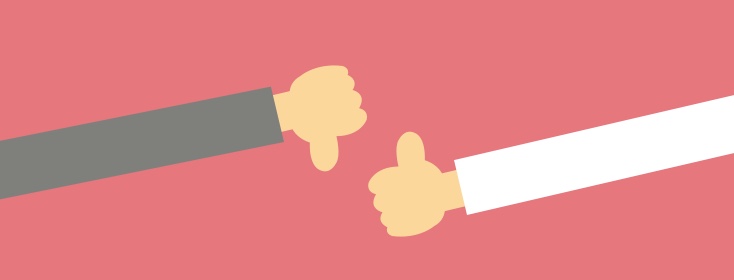The Dos and Don'ts of Using Supplemental Oxygen at Home
Using supplemental oxygen at home can go a long way towards improving or maintaining the quality of life for a person who has COPD. It can help reduce your shortness of breath so that you can be more active. It can also help you feel more alert when awake, as well as to rest more peacefully at bedtime. Some people need supplemental oxygen when exercising, while others use it only while sleeping. And some people need to use it continuously.
Delivery methods
- In gas form, via an oxygen cylinder (the old-fashioned bullet-shaped metal tanks)
- In liquid form, via a barrel-shaped metal tank that converts the liquid to gas upon release
- Via an oxygen concentrator, which extracts oxygen from your environmental air
Your doctor will work with you to decide what your oxygen needs are and will write a prescription for the exact flow rate (liters per minute), frequency and delivery system that is the best fit for you. Home oxygen is quite safe when used properly. Contrary to what you may have heard, oxygen is not explosive and does not burn, but it can support fires that are already burning. So follow these do's and don'ts when using your oxygen to avoid any hazards.
Tips and tricks
Although care and cleaning tasks can vary slightly with each of the different types of oxygen delivery systems, there are some universal safety precautions to take regardless of whether you are using oxygen cylinders, liquid oxygen or a concentrator.
Positive actions to take when using oxygen
- DO post a sign in the room where you have your oxygen that there is to be "No Smoking"
- DO notify your local fire department that there is oxygen in the house
- DO make sure you have a functioning smoke alarm in or right outside the room where oxygen is being used
- DO have a fire extinguisher close at hand by your oxygen tank and know how to use it
- DO store your oxygen system in a well-ventilated area
- DO turn off your oxygen when you're not using it; don't set the cannula or mask on the bed or a chair even for a few minutes if the oxygen is turned on
- DO use 100% cotton bed linens and blankets, as they are less likely to give off sparks from static electricity
- DO use only water-based lubricants on your nose and lips, when needed, e.g., KY Jelly or Surgilube
- DO stay at least 10 feet away from open flames, such as a fireplace, gas heater or stove, candles, etc.
- DO be sure to monitor your gauges on your oxygen equipment to make sure they are not running low; notify your oxygen supplier with plenty of time for them to deliver refills
- DO be sure to ask questions of your doctor and/or oxygen delivery person when you have them
Actions and situations to avoid when using oxygen
- DON'T change the flow rate on your oxygen from what your doctor prescribed; getting the right amount of oxygen for your condition is essential to your health
- DON'T smoke while you're on oxygen!
- DON'T use petroleum-based lubricants like Vaseline, Chapstick, or Blistex on chapped lips or nostrils
- DON'T use any electrical appliance while on oxygen. This includes hair dryers, curling irons, heating pads and electric razors.
- DON'T use anything flammable around oxygen equipment, such as cleaning fluid, paint thinner, aerosol spray cans (even hair spray, air fresheners and deodorant)
- DON'T cut or splice your oxygen tubing and never use more than a 50-foot long tubing
- DON'T store your oxygen in an enclosed space such as a closet or in the trunk of a car
- DON'T use vapor rubs, oil-based hand lotions or petroleum jelly or have oily hands when using your oxygen equipment
- DON'T use alcohol-based hand sanitizers, unless you thoroughly rub them into your skin and let your hands dry completely before handling oxygen equipment
Do's and don'ts for using oxygen cylinders
Here are some additional precautions when dealing with an oxygen cylinder delivery system:
- DO store the cylinder in an upright position, using a cart or strapped or tied into place, so that it will not fall over (if using small, portable tanks, they can be stored on a cart or laid down flat on a level surface)
- DO keep your cylinder in a place where it is not likely to get knocked over
- DON'T run short of oxygen; have back up tanks available
Do's and don'ts for using liquid oxygen
Here are some additional things to be aware of when using liquid oxygen:
- DON'T turn the tank on its side, as this can allow the liquid oxygen to leak out
- DO keep the tank at least 5 feet away from space heaters, electric or gas heaters, steam pipes, furnaces, and radiators
Do's and don'ts for using oxygen concentrators
These are a few more safety tips when using an oxygen concentrator:
- DON'T ever use an extension cord to plug in your concentrator or plug anything else into the same outlet
- DO keep the unit at least 6 inches away from the wall, curtains or anything else that might block the filter or prevent air circulation around it; this will also help avoid heat build-up (never cover the unit with anything either)
- DO notify your local power company that you have an oxygen concentrator in use, so that you will be given priority during power outages
- DO consider buying a backup generator in the event of power outages
Please be sure to check out our upcoming article on the Do's and Don'ts of Traveling with Oxygen.

Join the conversation